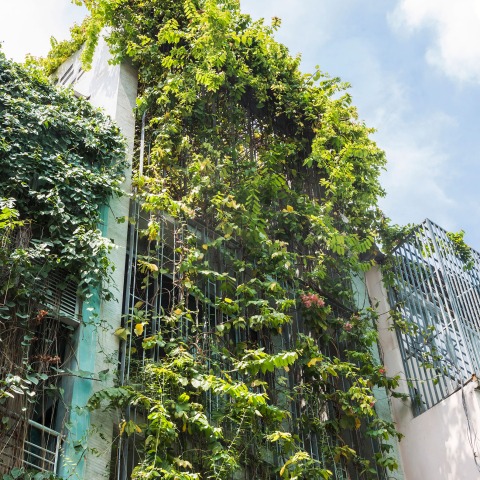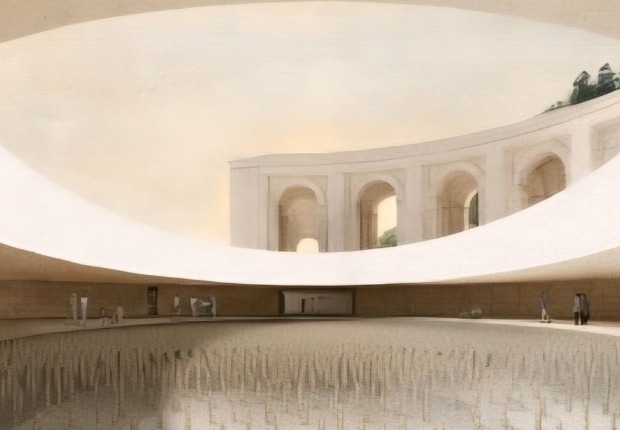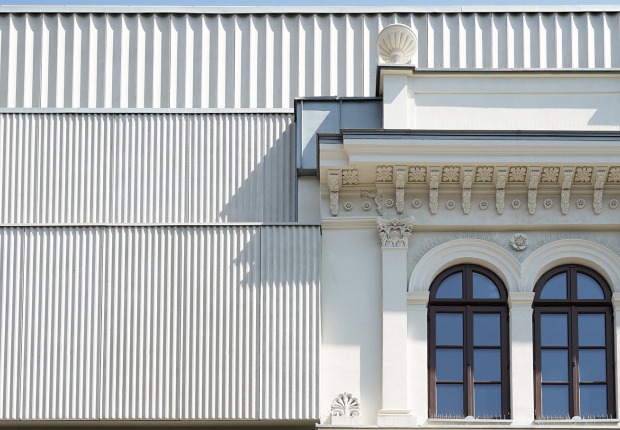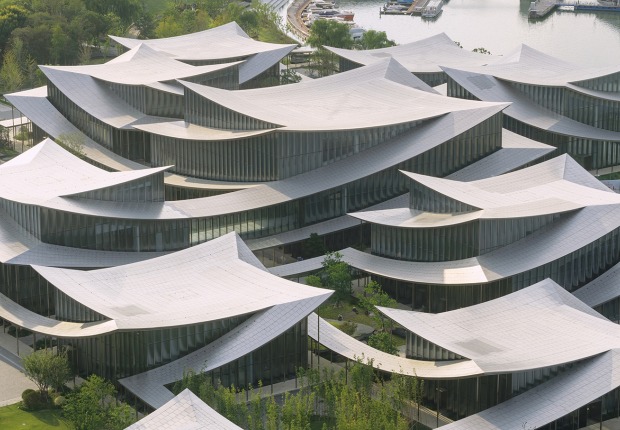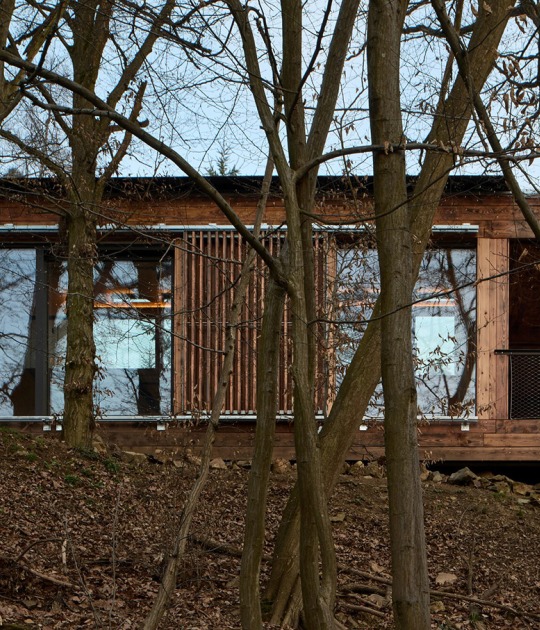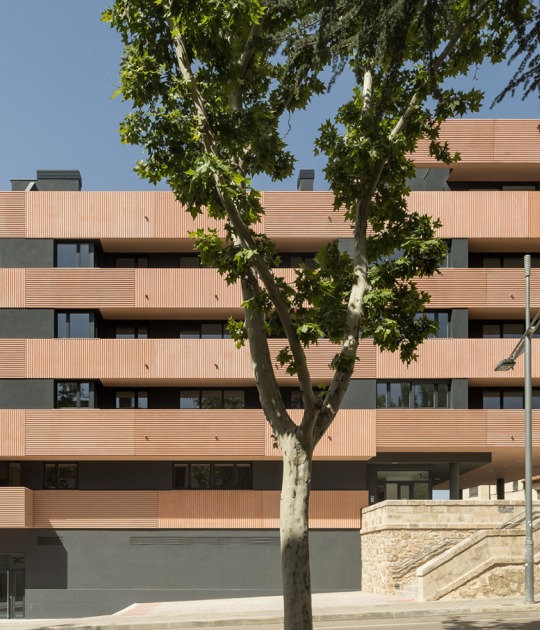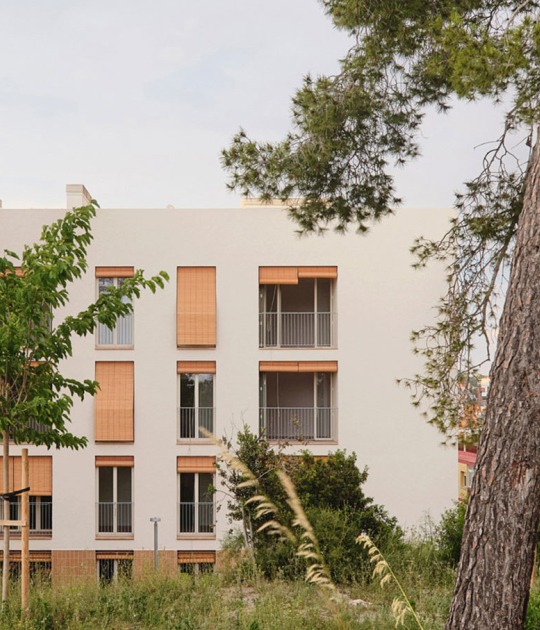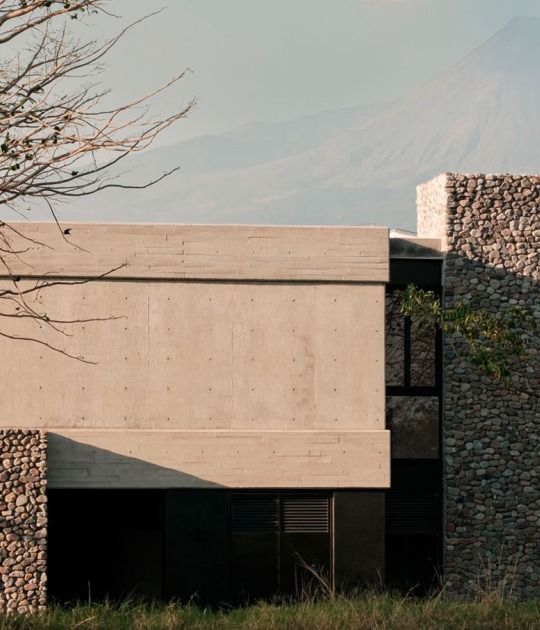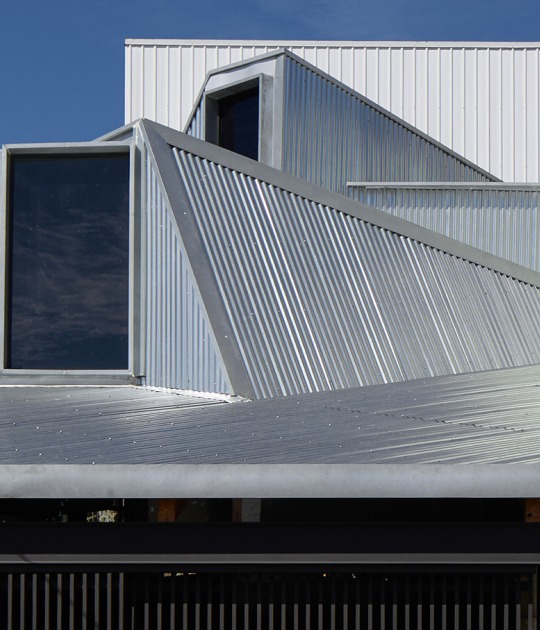They start from a rectangular shaped plot of fairly unequal proportions, 3.9 m wide by 17.8 m deep, solving the house in a staggered way, thus creating a series of empty spaces with different arrangements.
This is because Vo Trong Nghia Architects discard the idea of a single central patio, so they fragment it by distributing it throughout the house favoring natural ventilation in the house and a feeling of greater spaciousness.
On the other hand, the envelope is given by a series of pots that cover the entire house. This helps maintain a feeling of privacy in the home without the need to close it to the outside. It also helps maintain a better indoor temperature and in turn protects from possible urban crime.
Project description by Vo Trong Nghia Architects
The Breathing house is for a single family, located in the heart of Ho Chi Minh City. The plot is 3.9m wide and 17.8m deep, only accessible by a tiny alley with crowded surroundings. Within this extremely high-dense neighborhood, we aimed to design a house that introduces an external environment while ensuring privacy.
Due to the circumstances of site, the opening of the building was physically constrained to the front, top and back of the house. In order to adjust the distance between neighbouring buildings while maximizing the opening area, we wrapped the aforementioned three surfaces of the building with a “green veil”, which is made of creeper plants that grow on a steel mesh. This soft layer, as an environmental diffuser, filters direct sunlight and prevents the interior space from overexposure to the outside, without the feeling of isolation. It is composed of planter boxes at each floor slab, with modularized galvanized steel elements attached to it. This structure provides a green view throughout the house, which also protects the residents from the urban crime.
Inside the “green veil”, the building consists of 5 tower-like volumes that are staggered and connected to each other, arranged in between the two boundary walls. The external spaces created by the staggered arrangement of the volumes, which we call “Micro voids”, play a role in providing myriad indirect lighting and ventilation routes throughout the building. In the narrow and deep plot shuttered by neighbours on both sides, it is more environmentally effective to promote ventilation for each corner of the house, by multiple “micro voids”, rather than having a singular large courtyard. The “micro voids” have openings on each of the floors, through which the residents have a more longitudinal and diagonal see-through view from everywhere, looking into the green and other spaces. The staircase is also designed as one of the micro voids with top light and openings facing the rooms. The porous composition of the building reduces the use of air conditioning to enhance natural ventilation, creating both spatial and visual connection and depth in the house.
The roof terrace is covered by the “green veil”, becoming a space full of greenery which is rare in the crowded city area. The significance of the project is that it creates a green space, in the heart of a growing mega city. We hope the essence of this design would give positive influence to the cities in Vietnam, which is losing its green spaces at an alarming rate.
---
Breathing house es una vivienda unifamiliar ubicada en el corazón de la ciudad de Ho Chi Minh. La parcela tiene 3,9 m de ancho y 17,8 m de profundidad, solo accesible por un pequeño callejón con un entorno abarrotado. Dentro de este vecindario extremadamente denso, nuestro objetivo era diseñar una casa que presentara un entorno externo y garantizara la privacidad.
Debido a las circunstancias del sitio, la apertura del edificio estaba físicamente limitada al frente, la parte superior y la parte posterior de la casa. Para ajustar la distancia entre los edificios vecinos y maximizar el área de apertura, envolvimos las tres superficies mencionadas del edificio con un "velo verde", que está hecho de plantas trepadoras que crecen en una malla de acero. Esta capa suave, como difusor ambiental, filtra la luz solar directa y evita que el espacio interior se sobreexponga al exterior, sin la sensación de aislamiento. Se compone de maceteros en la altura de cada forjado, con elementos modulares de acero galvanizado unidos a él. Esta estructura proporciona una vista verde en toda la casa, que también protege a los residentes del crimen urbano.
Dentro del "velo verde", el edificio consta de 5 volúmenes en forma de torre escalonados y conectados entre sí, dispuestos entre las dos paredes fronterizas. Los espacios externos creados por la disposición escalonada de los volúmenes, que llamamos "Micro vacíos", desempeñan un papel en la provisión de innumerables rutas indirectas de iluminación y ventilación en todo el edificio. En la parcela estrecha y profunda cerrada por vecinos en ambos lados, es más eficaz para el medio ambiente promover la ventilación para cada esquina de la casa, mediante múltiples "micro huecos", en lugar de tener un gran patio singular. Los "micro huecos" tienen aberturas en cada uno de los pisos, a través de los cuales los residentes tienen una vista transparente más longitudinal y diagonal desde todas partes, mirando hacia la vegetación y otros espacios. La escalera también está diseñada como uno de los micro huecos con luz superior y aberturas que dan a las habitaciones. La composición porosa del edificio reduce el uso de aire acondicionado para mejorar la ventilación natural, creando una conexión y profundidad espacial y visual en la casa.
La terraza de la azotea está cubierta por el "velo verde", convirtiéndose en un espacio lleno de vegetación que es raro en el área de la ciudad llena de gente. La importancia del proyecto es que crea un espacio verde, en el corazón de una mega ciudad en crecimiento. Esperamos que la esencia de este diseño le dé una influencia positiva a las ciudades de Vietnam, que está perdiendo sus espacios verdes a un ritmo alarmante.
